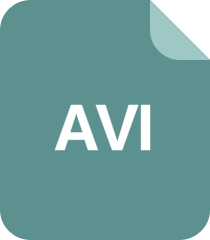OpenGL(R) 1.1 Release for Windows(R) 95
---------------------------------------
1. OpenGL Functionality Notes
2. Redistributable components for Windows 95
1. Functionality Notes
-----------------------
The OpenGL API is supported on a variety of graphics hardware; the
software in this release provides support for graphics hardware including
basic emulation on any video adapter that is supported with the operating
system, and accelerated graphics hardware that is supported by an OpenGL
mini-client driver (MCD) or an OpenGL installable client driver (ICD).
This release of OpenGL will run on all supported hardware under
Windows 95, including VGA and Super VGA 16 color mode displays.
The OpenGL runtime libraries for Windows 95 are not bundled with the
Windows 95 operating system currently, but application developers may freely
redistribute from this SDK along with their applications to other Windows 95
systems. In addition, the runtime libraries have been bundled with the
Windows 95 operating system in the OEM system release 2, so OEM Windows 95
systems shipping later in 1996 will begin appearing with the OpenGL runtime
libraries included.
To achieve good shaded rendering with OpenGL applications, you should use a
color graphics mode with 256 or more colors. Reasonable shading is
possible for most OpenGL applications with 256 colors.
The Windows NT 4.0 and Windows 95 releases of OpenGL includes new functionality
and performance enhancements. These include:
1) A complete implementation of OpenGL 1.1. OpenGL 1.1 contains several
functions, including vertex array, polygon offset, logic ops, and several new
functions for handling textures. The vertex array and texture calls are
particularly significant, as they may enable order of magnitude performance
improvements in some applications.
2) Overlay planes extensions. These Microsoft OpenGL extensions permit
applications to manage and render into overlay planes where supported
in the graphics hardware. This permits applications to bring up dialog boxes
and other UI features without overwriting 3D renderings.
3) Extended metafile support. Applications may encapsulate OpenGL calls and
data in GDI extended metafiles. This, together with NT 4.0 print spooler
enhancements for remote metafile rendering, makes it possible to print OpenGL
graphics at high resolution on the print server. This feature is limited to
the Windows NT release.
4) Microsoft extensions. The Microsoft OpenGL implementation also supports
these performance extensions: GL_WIN_swap_hint, GL_EXT_bgra, and
GL_EXT_paletted_texture. They improve the performance of some applications
significantly.
5) Performance. The software renderer has been tuned for this release.
Performance tuning has been carried out for the front end of the OpenGL
pipeline as well as for rendering particular primitives, especially
anti-aliased lines and texturing. Software rendering is generally 2-4x
faster.
6) OpenGL hardware acceleration. This release of OpenGL supports a simpler
mini-client driver (MCD) model to accelerate 3D graphics operations. In
particular, Windows NT 4.0 includes a Matrox Millennium mini-client driver
that accelerates OpenGL functions. A corresponding driver for Windows 95
is expected to be available later this year.
2. Redistributable components for Windows 95
--------------------------------------------
The OpenGL redistributable components for Windows 95 are in the DLL
directory. It contains the runtime dynamic-link libraries for OpenGL and
GLU. We recommend either of two methods for redistributing these libraries
with your application on Windows 95 (for Windows NT, the libraries are
bundled with the operating system and should not be redistributed):
1) In your setup program, install these libraries in the
application directory along with your application. This gives you
greater control over the version of OpenGL that your application
will link to (an issue if other applications install other versions
of the library), but also gives you greater responsibility for
updating your customers' libraries if and when that is required
to address defects, add functionality, improve performance, etc.
2) In your setup program, install these libraries in the windows
system directory. If you do this, you should use the Win32 setup
API call VerInstallFile to help prevent installing an older version
of the libraries over another application's installation of a more
recent version of the libraries.
OpenGL is a registered trademark of Silicon Graphics, Inc.
Windows is a registered trademark of Microsoft Corporation.
我虽横行却不霸道
- 粉丝: 95
- 资源: 1万+
最新资源
- Simulink整车控制器VCU模型,别人看不懂的模型,不能说别人有问题,只能说明建模型的人有问题 好的模型一定是处理恰当,可读性强的 此模型简单易懂,也是经过实车验证的 (其中自动驾驶部分已做
- Web自动化测试-ChroPath插件快速精准定位网页元素的方法与实践
- 经纬度转度分秒 方便快捷
- 分布式驱动汽车稳定性控制 采用纯Simulink模型搭建,包括控制策略和车辆动力学模型 采用分层式直接横摆力矩控制,上层包括模型预测MPC,滑模控制SMC,PID控制,LQR控制 可灵活对四种控
- 使用c++的程序设计案例
- 图幅号求算及度分秒换算
- Altium Designer PCB设计实战技巧汇总 - 提升设计效率与质量
- 基于差动制动的横摆稳定性控制 ~carsim自带驾驶员模型计算车轮转角 ~ 滑膜控制计算车辆附加差动力矩 ~ 按照差动制动分配规则分配力矩 ~ 通过仿真验证设计算法的有效性 特殊,出不 (图一三为不
- 微信小程序实现电影列表
- 快速排序算法原理及其Python实现详解-用于高效数据排序
- (文献+程序)多智能体分布式模型预测控制 编队 队形变 lunwen复现带文档 MATLAB MPC 无人车 无人机编队 无人船无人艇控制 编队控制强化学习 嵌入式应用 simulink仿真验证 PI
- 网页版 Visual Studio Code的使用.pdf
- 字节跳动DeepSeek: 先进的人工智能语言及多模态模型及其广泛应用和发展前景
- Halcon License 1月
- 七自由度车辆动力学模型+dugoff轮胎仿真模型 车身三个自由度+四个车轮滚动自由度 simulink 附带公式说明
- OpenHands: Code Less, Make More
资源上传下载、课程学习等过程中有任何疑问或建议,欢迎提出宝贵意见哦~我们会及时处理!
点击此处反馈





















评论0